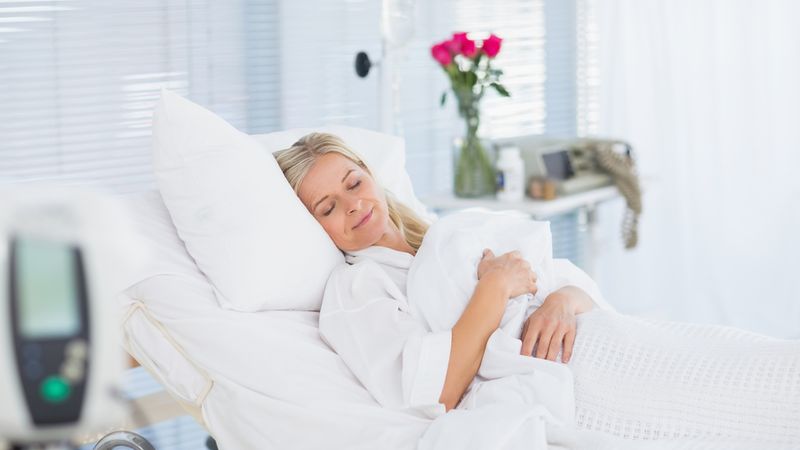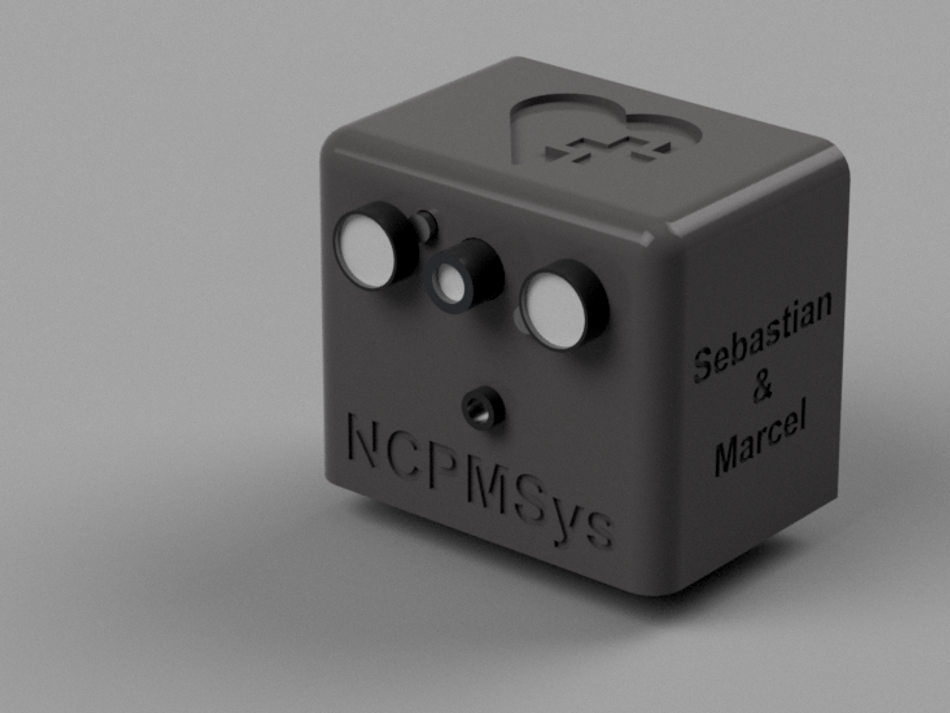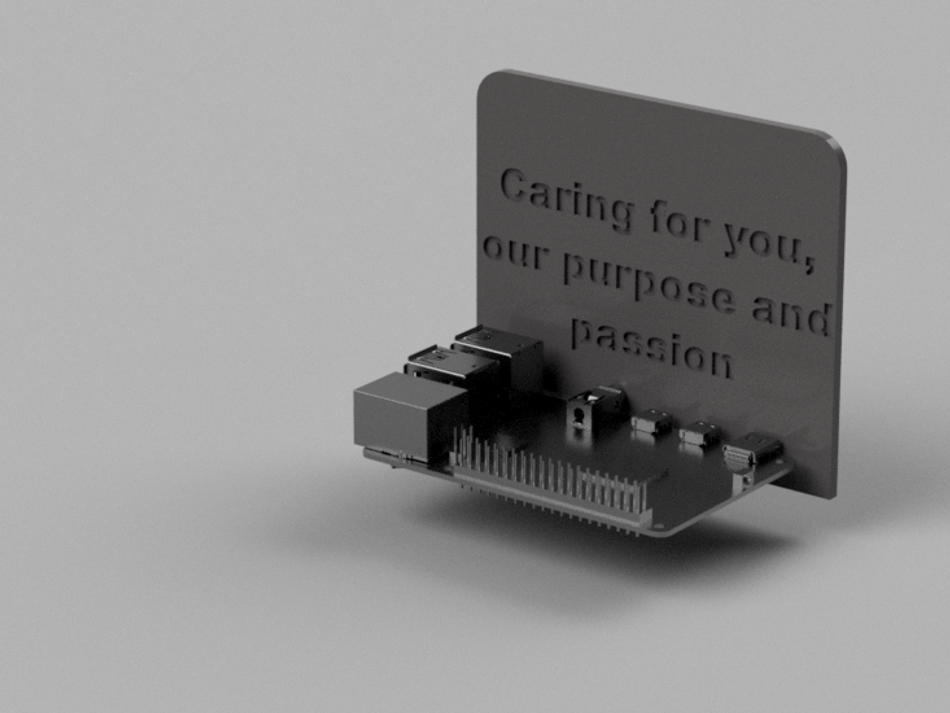Thermal imaging for remote patient monitoring: Winners of the OKdo Engineering Challenge Wevolver Community Vote
In response to the OKDo Engineering Challenge, Marcel Ochsendorf and Sebastian Kindorf developed a medical device that uses thermal imaging for remote patient monitoring. Their innovative project won the Wevolver Community Vote.
The ROCK Engineering Challenge invited engineers, entrepreneurs, inventors, and developers to submit an idea for a part, product, or system that took advantage of the ROCK single-board computers.
We received a significant number of submissions from across the globe, impressed with cutting-edge applications of single-board computers.
The Wevolver Community Vote winner was selected by our community through a public poll. The Wevolver community winners of the OKdo challenge are Marcel Ochsendorf and Sebastian Kindorf, who are developing a thermal imaging medical device.
This product is designed to aid medical facilities by using a thermal imaging camera to non-invasively record a patient's status. The system can determine breathing status, frequency, body temperature, and movements like falls, alerting medical staff when necessary.
Wevolver’s Content Director, Jessica Miley, interviewed Marcel and Sebastian to learn more about their engineering careers, what motivated them to enter the challenge, and the plans for their ideas.
Jessica Miley: Hi team. Thanks for speaking with us. Let’s start by getting you guys to introduce yourselves.
Marcel Ochsendorf: My name is Marcel. I am currently a Master's student in my final semester. I have a Computer Science Bachelor and am now doing electrical engineering in my Master's. I love doing engineering projects, and I have attended several hackathons and so on in the past.
Sebastian Kindorf: I'm Sebastian. After I completed an apprenticeship as an electrician, I decided to continue with a Bachelor's degree, also in electrical engineering, and then graduated with my Master’s degree in April. Afterwards I worked for two months in Morocco on an automation project for sustainable irrigation.
Jessica Miley: How did you two meet and start working on this project together?
Sebastian Kindorf: We met when we were both working at CERN- the International Research Center in Switzerland. We actually met accidentally, and after we talked a little bit, we realized we were on the same wavelength. He [Marcel] makes a lot of electronic projects and so do I. After a few weeks, I said, “Okay, I think we should start a project together.” We had a few ideas, then I saw Wevolver had this engineering challenge and we decided to enter. So we went to a restaurant, drank two beers and did some brainstorming!
Marcel Ochsendorf: This project was born out of an experience that I had doing some work as an IT engineer in a hospital a few years ago. This hospital had problems with monitoring patients because it is really data-sensitive. In Germany, data is very regulated. For example, you cannot record a patient and then analyse it. So it's really challenging to create a device for remote patient monitoring. We had the idea to use a thermal camera to take a video feed anonymously, sSo you only have an abstract grayscale image with temperature information. Its not possible to clearly identify a person out of this captured image but it is possible to detect the patient's body (position, vital signs) so that patient monitoring can be done without violating the patient's personal rights and that the patient may feel uncomfortable by the "monitoring".
Jessica Miley: So the product addresses a problem that health institutions have of keeping an eye on a large number of patients - your product can monitor key health aspects such as breathing etc. - without needing staff to be everywhere at once?
Marcel Ochsendorf: Yes. In Germany, and likely other countries, hospitals are very understaffed. So it’s a good solution to monitor patients without additional staff. Currently, patients are monitored by being physically attached to machines, for example, heart rate and oxygen via a finger clip.
Jessica Miley: How does the product actually work?
Sebastian Kindorf: The product primarily relies on two different sensor signals for its functioning.
First, a thermal camera is utilized to record the patient's body temperature. Each individual has a unique "healthy" body temperature range, and deviations from this range can indicate potentially dangerous conditions such as hypothermia or fever. Monitoring body temperature serves as an essential indicator for determining if a patient requires closer examination.
Secondly, a regular imaging camera, combined with specific evaluation algorithms, is used to derive additional parameters such as respiratory status, respiratory rate, heart rate, heart rate variability, and patient positioning. This information can provide insights into potential falls from the bed. To determine heart rate and heart rate variability, we employ remote photoplethysmography (rPPG) technology. The rPPG analyzes color changes in the skin to extract cardiovascular information.
By simply transferring patient data, the hard-working healthcare workers should eventually be relieved.
Jessica Miley: What kind of technical hurdles have you faced, and how did you overcome them or what? How did using the ROCK hardware assist in that?
Marcel Ochsendorf: The main goal is to do all the sensor processing locally. In addition, secure encryption algorithms must be used. This way, no sensitive data is left on a device or forwarded to personnel. The complete evaluation runs locally on the device and only status information leaves the device. This is to comply with the strict requirement of data protection guidelines.
Sebastian Kindorf: The Rock chip has a very good GPU and thus good possibilities for processing by algorithms or trained AIs. Image processing is therefore much faster on the Rock chip than on a Raspberry Pi, for example, where only a few frames per second of high definition image data can be processed. Additionally, ROCK's single board computers were also available during the Covid19 pandemic, compared to many other SBCs which were not.
Jessica Miley: Can you say a little bit about your plans for the future with this project? I know that you had said in your submission that you had spoken to one hospital about doing a test. So maybe you can talk a little bit about your plans to scale.
Marcel Ochsendorf: Yes, we have talked to one hospital in Germany. It’s the institution I used to work for, so I have some contacts there. Once we finalize our prototype, the hospital has offered to give us some room or an environment to set up and test. This is an opportunity for us if we progress further and are confident that the system is fully working. Then we will have the opportunity to test it there.
Jessica Miley: What other resources do you need to do that? What are the challenges ahead, apart from perhaps needing time?
Sebastian Kindorf: We are implementing the project following the V-model methodology. The Concept of Operation (CoP) phase is complete, and we are now in the requirements and architecture phase. We are specifying the prototype and final product requirements and concretizing the device implementation. The hardware components for the final system have been determined, ordered, and will undergo step-by-step testing soon.
I think we have an edge, and the device has a huge potential, even if we just say we only want to have it in intensive care.
Jessica Miley: Final question: What advice would you give to other engineers who are developing novel projects like yours?
Marcel Ochsendorf: Be creative. Here in the university context, people are afraid of trying things and wrecking things.
Marcel Ochsendorf: You can't get some experience if you don't try it. Okay, this can break but at least you tried. Okay, this breaks. Okay, then it's fine. Then go on to the next iterations. I think this is a very good approach to build rather than overly plan. So, planning is good, but it's not everything!
Jessica Miley: I love that approach; just trying something is as important as planning! And what about you, Sebastian? Do you have some advice?
Sebastian Kindorf: I agree; if you don't try, you don't get experience. I also think you should make the most of being a student, because you have nothing to lose!
Jessica: Thanks guys - this was a great conversation - we really look forward to following your journey with this project.



